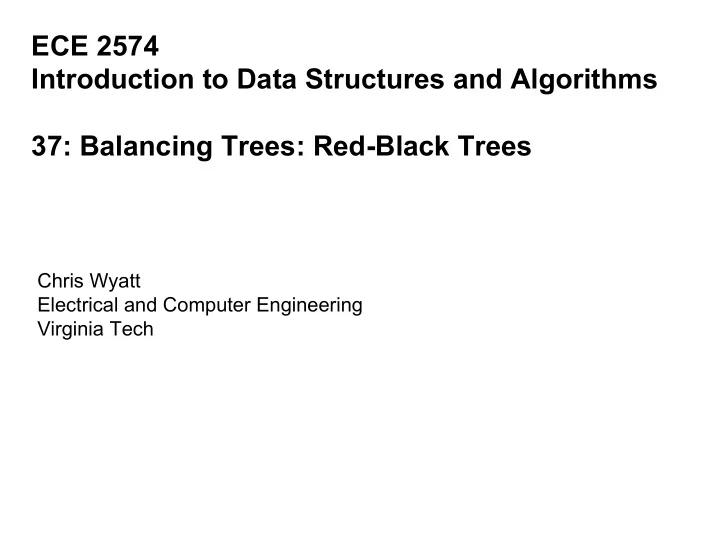

ECE 2574 Introduction to Data Structures and Algorithms 37: Balancing Trees: Red-Black Trees Chris Wyatt Electrical and Computer Engineering Virginia Tech
The average complexity (number of comparisons) when searching a BST is best when the tree is balanced. So the question naturally arises, can we make a BST balanced? 20 50 40 40 55 45 20 45 60 50 55 60
Review: Balanced Trees Recall, a tree of height h is balanced if it is full down to level h-1; and the depth of a tree was the number of nodes from the root to a leaf.
Basic approach to making a balanced binary tree. 1. Insert/Delete a node 2. Restore the balance of the tree. The primary tool used to restore balance is called a rotation. There are left and right rotations and the rotation should not violate the binary tree property.
Review: Left rotation Let A, B, and C be subtrees and a, b nodes in the following tree.
Review: Right rotation Let A, B, and C be subtrees and a, b nodes in the following tree.
The two most popular balanced Binary Trees are the AVL and the Red-Black Tree. AVL trees (named after Adel ’ son-Velsk ’ ii and Landis who introduced them in 1962) require that the depths of the left and right subtrees of any node differ by at most one. The rules to enforce the AVL property are complex.
The two most popular balanced Binary Trees are the AVL and the Red-Black Tree. A related tree, introduced by Bayer in 1972, called red-black trees (symmetric binary B-trees) have the property: no path from the root to the leaf has length more than twice the length of any other path. Red-black trees are much easier to implement.
Implementation of a Red-Black Tree See RBTree.h
Next Actions and Reminders Read CH pp. 603-614 on graphs Program 5 is due 12/11.
Recommend
More recommend